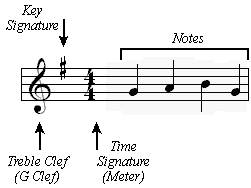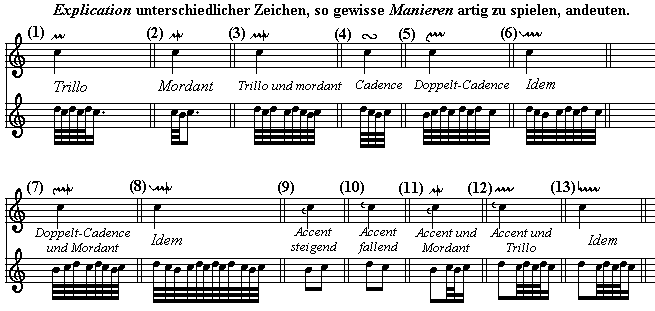
the main elements of a musical score,,,,,,,,,,,

anatomy of a note, a single sound of a particular pitch and length which is notated with a symbol made up of a notehead (in all cases), a stem (in some cases) and a flag (in some cases), and which with notes bearing flags are grouped together using a beam
Starting with Chambonnières' print of 1670, almost all French composers included tables of ornaments in their printed editions, to illustrate 'the manner of playing.' Jean-Henri d’Anglebert (1635-1691) included a very thorough table of ornaments, perhaps the most complete of all. His symbols and types of ornaments provide both melodic embellishments and elaborate chordal figurations. D'Anglebert's system, like all French ornament systems, is combinatorial: a small number of simple gestures can be combined in a multitude of ways to produce a very rich set of ornamental figures. Since D'Anglebert uses exactly the same set of ornaments in one of his figured-bass examples, his entire oeuvre is a rich source of ideas for accompaniment in the French style. His table served as the basis for many similar tables published later. Monsieur de Saint Lambert makes frequent reference to it in his influential Les principes du clavecin of 1702; and J. S. Bach, C.P.E.'s father, used it as the basis for the ornament table he provided for Wilhelm Friedemann's Clavier-Büchlein in 1720, which is applicable to much of his, that is J.S.'s own music.


